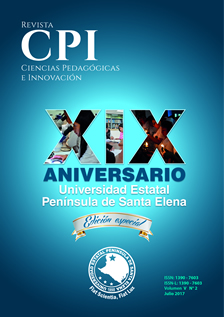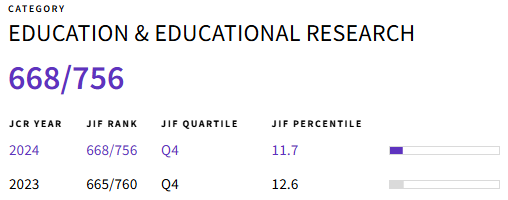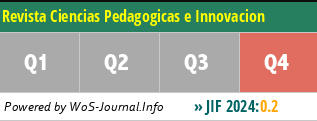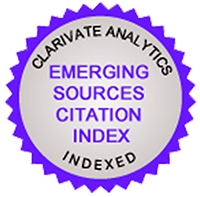El asbesto como elemento perjudicial en el ser humano y de impacto ambiental negativo a nivel mundial
DOI:
https://doi.org/10.26423/rcpi.v5i2.182Palabras clave:
Asbestos, prohibición de su uso de asbestos, Impacto ambientalResumen
El asbesto es un grupo de minerales no metálicos fibrosos, compuestos de silicatos de doble cadena que poseen gran resistencia a la tensión y la degradación química y conductividad térmica baja. A pesar de la evidencia experimental y poblacional de que los manifestados minerales son agentes cancerígenos y reconocidos por la Organización Mundial de la Salud, aún continúan usándose, en muchos países, de Europa como América Latina su uso continúa, a costa de la salud de los trabajadores, de las familias, ya que el uso de este material impera desde las escuelas, complejos familiares de bajo costo e incluso en los hospitales, lo que se ha convertido en un problema mundial por el desarrollo de enfermedades asociadas a estos minerales en individuos expuestos. El presente artículo se analiza cómo la salud y los daños al medio ambiente se ven afectados, por el uso del asbesto, las enfermedades asociadas a él y el comportamiento mundial frente a esta problemática; además, se plantea la conveniencia de concienciar a la comunidad en general y a los gobernantes sobre lo perjudicial del asbesto y el grave efecto que causa a los individuos expuestos. Finalmente, La nula o muy limitada información y vigilancia sobre el Asbesto y sus riesgos por parte de los Gobiernos, no obstante que la legislación de todos los países, desde hace más de 3 décadas, considera esta sustancia como causante de enfermedad profesional, hace que el asbesto sea el enemigo silencioso del ser humano y del medio ambiente.
Descargas
Referencias
Agency for Toxic Substances and Disease Registry. What Is Asbestos? Retrieved April (25) 10, 2009, from: http://www.atsdr.cdc.gov/asbestos/more_about_asbestos/what_is_asbestos.
Agency for Toxic Substances and Disease Registry. Toxicological Profile for Asbestos. September 2001 Retrieved April 10, 2009, from: http://www.atsdr.cdc.gov/toxprofiles/tp61.pdf.
National Toxicology Program. Asbestos. In: Report Carcinogens. Eleventh Edition. U.S. Department of Healt and Human Services, Public Health Service, National Toxicology Program, 2005.
Ullrich RL. Etiology of cáncer: Physical factors. In: DeVita VT Jr., Hellman S, Rosenberg SA, editors. Cancer: Principles and Practice of Oncology. Vol. 1 and 2 7th ed. Philadelphia: Lippincott Williams and Wilkins, 2004.5.U.
Geological Survey. Mineral Commodity Summaries 2006: Asbestos. Retrieved April 10, 2009, from: http://minerals.usgs.gov/mineral/pubs/mcs/2006/mcs2006.pdf.
Agency for Toxic Substances and Disease Registry. Asbestos: Health Effects. Retrieved April 10, 2009, from: http://www.atsdr.cdc.gov/asbestos/asbestos/health_effects/index.html.
U.S. Environmental Protection Agency. Health Effects. Assessment foor Asbestos. September 1984. EPA/540/1-86/049 (NTIS PB86134608). Retrieved April 10, 2009, from: http://cfpub.epa.gov/ncea/cfm/recordisplay.cfm?deid=40602.
International Agency for Research on Cancer. Asbestos. IARC Monographs on the Evaluation of Carcinogenic Risks to Humans, vol 14. Lyon, France. Retrieved April 10, 2009, from: http://monographs.iarc.fr/ENG/Monographs/vol14/volume14.pdf.Notificaciondesalida
Driscoll T, Nelson DI, Steenland K, Leigh J, Concha-Barrientos M, Fingerhut M, et al. The global burden of disease due to occupational carcinogens. Am J Ind Med. 2005 Dec;48(6):419–31.
Driscoll T, Nelson DI, Steenland K, Leigh J, Concha-Barrientos M, Fingerhut M, et al. The global burdenofnon-malignant respiratory disease due to occupational air borne exposures. Am J Ind Med. 2005Dec;48(6):432–45.
Concha-Barrientos D, Imel Nelson D, Driscoll T, Steenland NK, Punnett L, Fingerhut MA, et al. Selected occupational risk factors. In: Ezzati M, Lopez A, Rodgers A, Murray C, editors. Comp. Quantif. Heal. RisksGlob. Reg. Burd. Dis. Attrib. to Sel. major risk factors. Geneva: WHO; 2004. p. 1651–801.
Organización Mundial de la Salud. Eliminación de las enfermedades relacionadas con el amianto. Ginebra: Organización Mundial de la Salud; 2006. p. 4.
Observatoriode la Salud Pública. El amianto y la salud. Barcelona; 2007. p. 4.
Valverde M, Rojas E. Environmental and occupational biomonitoring using the Comet assay. Mutat Res.2009;681(1):93–109.
Asbesto o Amianto, un elementos peligroso [Internet].Not. Tecnológico Sem. No113. 2008 [cited 2013 Apr15]. p. 2. Available from: http://www.inti.gob.ar/noticiero/noticiero113.htm
Algranti E, Raile V. El Simposio Sobre Asbesto en América Latina, Sao Paulo, 25-27 de Abril de 2006.Cienc. Trab. 2006;8(21):122–30.
República de Chile Ministerio de Salud. Decreto 656Prohibe el uso del asbesto en productos que indica. D. Of. 2000;(13.01.2001).
Republica del Uruguay. Decreto 154/002 Prohibición de Amianto y Asbestos visto. D. Of.2002;CVIII (28708):245–A
Mujica N, Arteta JM. Asbesto en Venezuela. Cienc. Trab. 20008;10(27):21–4.
Comisión Venezolana de Normas Industriales. Norma Venezolana COVENIN 2253:1997: Concentraciones ambientales permisibles de sustancias químicas en lugares de trabajo e índices biológicos de exposición. Gac. Of. Caracas: Fondo Norma; 1998. p. 24.
Comisión Venezolana de Normas Industriales. Norma Venezolana COVENIN2251:1998: Manejo de asbesto. Caracas: Fondo Norma; 1998.
Virta R l. Asbestos. In: U.S. Geological Survey Minerals Yearbook, editor. 2011 Miner. Yearb. Washington, D.C.: U.S.G.S.; 2011. p. 8.1–8.6.
Colombia Ministerio de Protección Social. Plan nacional para la prevención de la silicosis, la neumoconiosis de los mineros de carbón y la asbestosis2010 –2030. Bogotá D.C.: Ministerio de la Protección Social; 2010. p. 141.
Corte Constitucional de Colombia. SentenciaC-493/98: Convenio Internacional -Protección de los riesgos a la salud por la exposición al asbesto. Bogotá D.C.: Corte Constitucional de Colombia; 1998. p. 19.
Colombia Ministerio de Trabajo y Seguridad Social. Resolución 00935 de 2001: se conforma la comisión nacional de salud ocupacional del sector asbesto. D. Of. 2001;(42137).
Consejo Consultivo Laboral Andino. Por la prohibición del amianto o asbesto en la subregión Andina. Lima: Consejo Consultivo Laboral Andino; 2007. p. 28.
Nishikawa K, Takahashi K, Karjalainen A, Wen C-P,FuruyaS, Hoshuyama T, et al. Recent mortality from pleural mesothelioma, historical patterns of asbestosuse, and adoption of bans: a global assessment. Env. Heal. Perspect. 2008 Dec;116(12):1675–80.
Brasil Departamento Nacional de Produção Mineral. Sumário Mineral 2011. Brasília: DNPM/DIPLAM; 2012. p. 128.
Virta R l. Asbestos. In: U.S. Geological Survey Minerals Yearbook, editor. 2011 Miner. Yearb. Washington, D.C.: U.S.G.S.; 2011. p. 8.1–8.6.
Descargas
Publicado
Número
Sección
Licencia
El titular de los derechos de autor de la obra, otorga derechos de uso a los lectores mediante la licencia Creative Commons Atribución-NoComercial-CompartirIgual 4.0 Internacional. Esto permite el acceso gratuito inmediato a la obra y permite a cualquier usuario leer, descargar, copiar, distribuir, imprimir, buscar o vincular a los textos completos de los artículos, rastrearlos para su indexación, pasarlos como datos al software o usarlos para cualquier otro propósito legal.
Cuando la obra es aprobada y aceptada para su publicación, los autores conservan los derechos de autor sin restricciones, cediendo únicamente los derechos de reproducción, distribución para su explotación en formato de papel, así como en cualquier otro soporte magnético, óptico y digital.

















